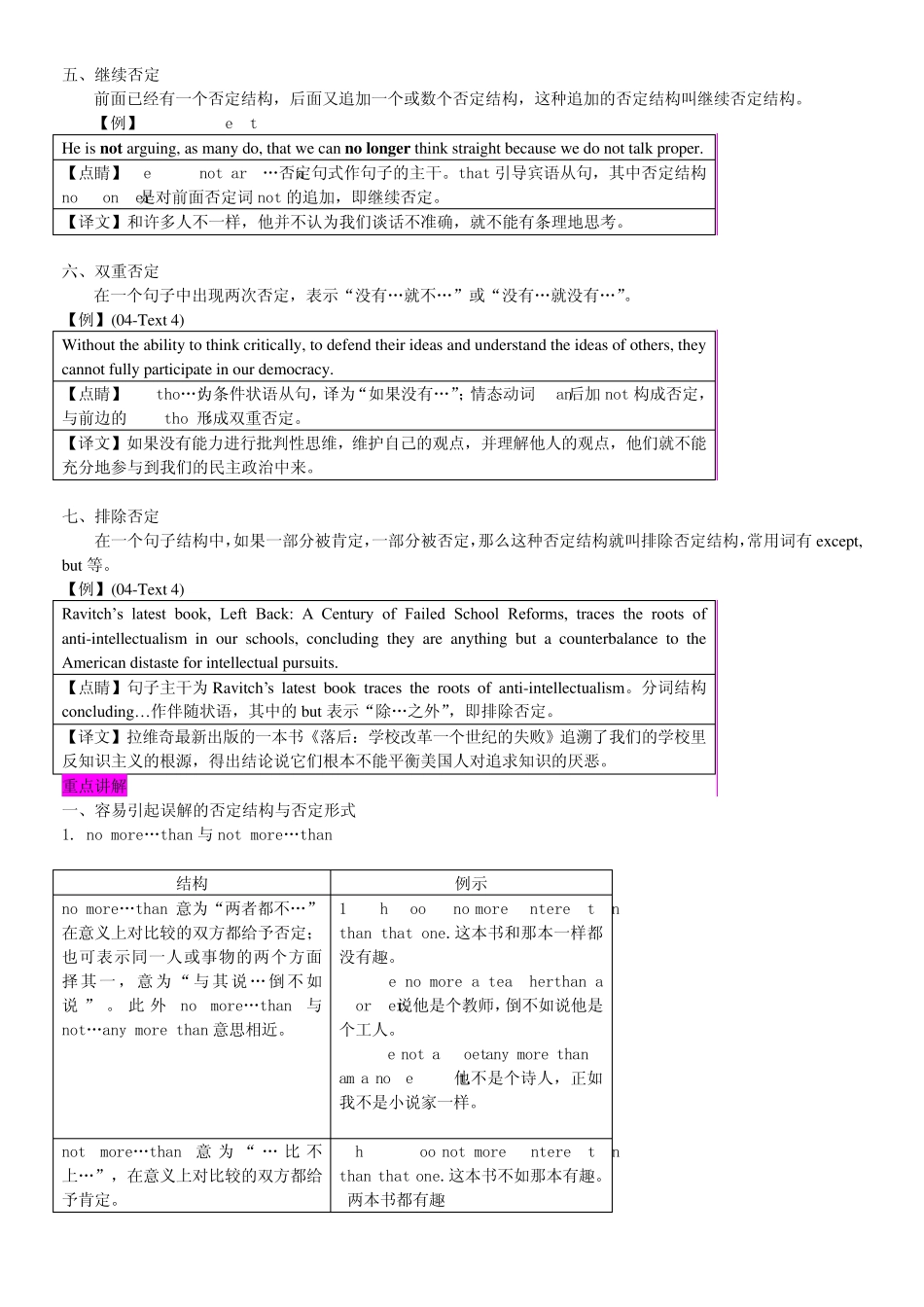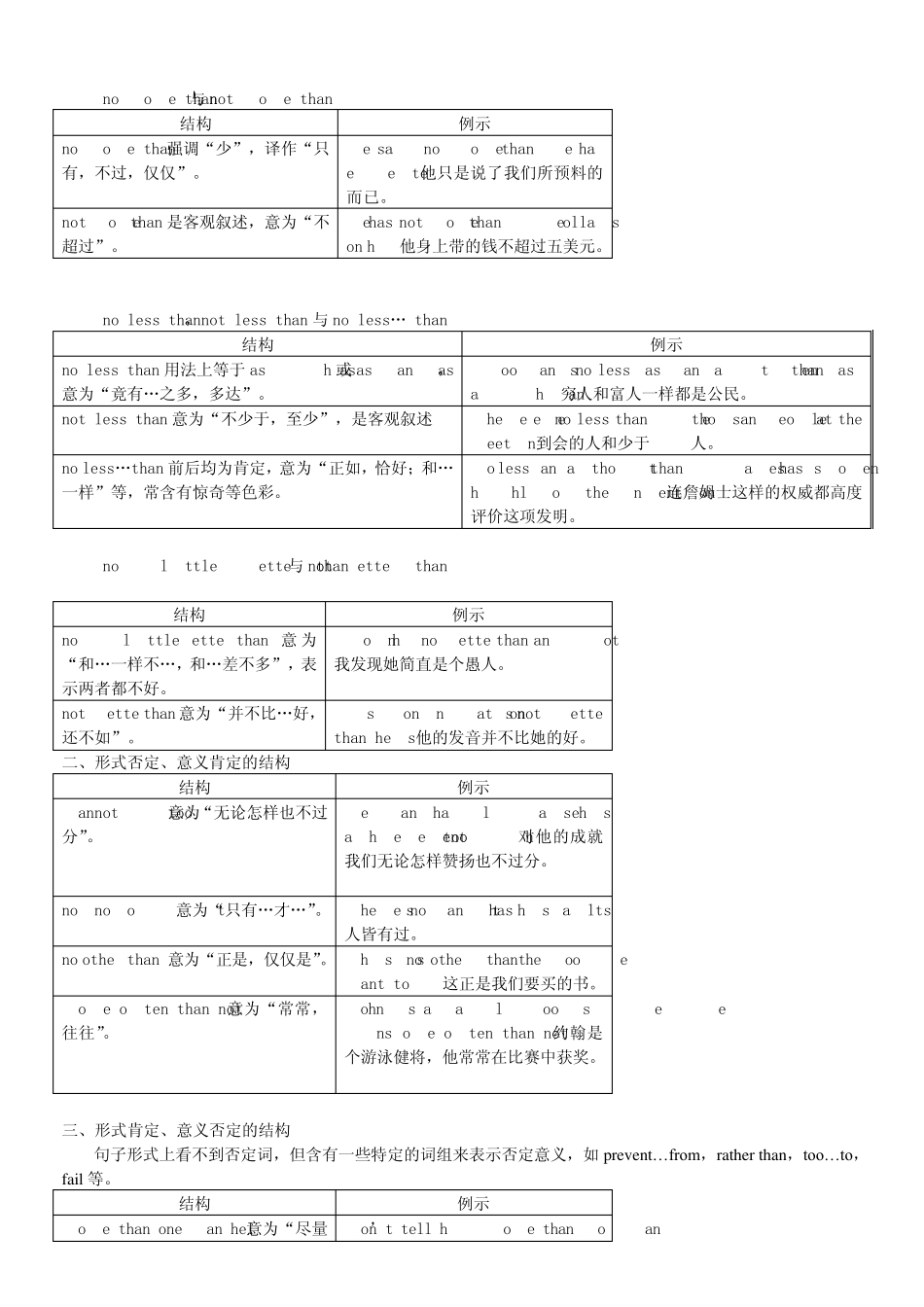LECTURE 10 否定结构 本堂目标:学会识别 7 种不同的否定结构,熟悉几种容易引起误解的否定结构与否定形式,熟练掌握各种否定结构的意义,准确翻译含有否定结构的句子。 基础预习 英语中的否定结构根据其表达方式的不同,可以分为以下几类: 一、一般否定 指否定谓语部分来实现对全句的否定,构成形式是在系动词、助动词或情态动词后加否定词 not 来实现的。 【例】(98-完型) Specialists in history and economics, have shown two things: that the period from 1650 to 1750 was marked by great poverty, and that industrialization certainly did not worsen and may have actually improved the conditions for the majority of the populace. 【点睛】本句所包含的否定结构借助组动词 did,在其后加 not构成。 【译文】历史学和经济学方面的专家已经证明了两件事:从 1650 年到 1750 年期间以极度贫困为特征,而工业化显然没有使这种状况恶化;事实上却可能改善了绝大多数平民百姓的生活条件。 二、部分否定 指否定词 not 和表示全体意义的代词(all,every,etc.)或副词配合使用,表示“并非„都是„”之意。 【例】(05-Text 3) But not all parts of the brain are equally involved; the limbic system (the “emotional brain”) is especially active, while the prefrontal cortex (the center of intellect and reasoning) is relatively quiet. 【点睛】否定词 not 和表示全体意义的代词 all 搭配使用,表示部分否定. 【译文】但并不是我们大脑所有部分的活动都是均等的;边缘系统(“感情大脑”)尤其活跃,而前额部分的脑皮层(理解和推理的中心部位)则相对安静。 三、全部否定 用no, none, nothing, nobody, nowhere, never, neither 等否定词作主语或主语的定语,后面加否定式谓语构成,表示“一切„都不是„”。 【例】(02-Text 4) Although it ruled that there is no constitutional right to physician-assisted suicide, the Court in effect supported the medical principle of “double effect”, a centuries-old moral principle holding that an action having two effects — a good one that is intended and a harmful one that is for...


